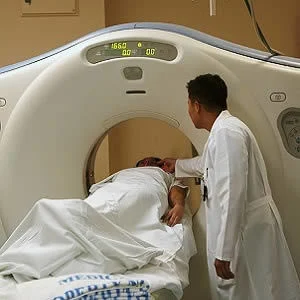Using data from the world's largest CT dose index registry, researchers have established national dose levels for common adult CT examinations. Results of the two-year study published in the journal Radiology established diagnostic reference levels (DRLs) and achievable doses (ADs) based on patient size for the 10 most common CT head, neck and body examinations.
See Also: Benchmarking Radiation Dose Indices: The American College of Radiology’s Dose Index Registry
While the impact of patient size on radiation dose is well established, national DRLs previously provided only one value for each examination based on a standard-size phantom representing an average patient, a single patient size or data averaged across all patient sizes.
For the study, the research team examined actual patient data from the American College of Radiology (ACR) CT Dose Index Registry to develop size-based DRLs that enable healthcare facilities to compare their patient doses with national benchmarks and more effectively optimise CT protocols for the wide range of patient sizes they examine. As of 2016, the ACR registry includes more than 30 million examinations from over 1,500 facilities. The researchers accessed more than 1.3 million ACR registry examinations conducted in 2014 at 538 healthcare facilities throughout the U.S. For head examinations, the researchers used lateral thickness as an indicator of patient size, while water-equivalent diameter was used for neck and body examinations.
Data from the 1.3 million CT exams provided median values, as well as means and 25th and 75th DRL percentiles for CT dose index (CTDIvol), dose-length product (DLP) and size-specific dose estimate (SSDE).
DRLs are typically set at the 75th percentile of the dose distribution from a survey conducted across a broad user base using a specified dose-measurement protocol. ADs are set at the 50th percentile of a dose distribution based on the fact that roughly 50 percent of facilities have already achieved doses at or below this value.
Results demonstrated that the new DRLs are not markedly different from those used in other countries.
"Both ADs and DRLs are provided to encourage facilities to optimise dose to a lower level than that indicated by the DRL," explained lead author Kalpana M. Kanal, PhD, a medical physicist, professor and section chief in diagnostic physics in the Department of Radiology at the University of Washington School of Medicine, Seattle. "Image quality must be taken into consideration when using DRLs and ADs to evaluate CT protocols on each scanner to determine if protocols are optimised."
Ideally, facilities should analyse and compare their median and size-grouped dose indexes with the respective size-based ADs and DRLs. If size-grouped dose indexes are not available, they should compare their overall median indexes with the average DRLs and ADs across all patient sizes.
Source: RSNA
Image Credit: Pixabay
References:
Kalpana M. Kanal, Priscilla F. Butler, Debapriya Sengupta, Mythreyi Bhargavan-Chatfield, Laura P. Coombs, Richard L. Morin.(2017) U.S. Diagnostic Reference Levels and Achievable Doses for 10 Adult CT Examinations. Radiology, 161911 DOI: 10.1148/radiol.2017161911
Latest Articles
image quality, CT exams, national dose levels, diagnostic reference levels
Using data from the world's largest CT dose index registry, researchers have established national dose levels for common adult CT examinations. Results of the two-year study published in the journal Radiology established diagnostic reference levels (DRLs)






